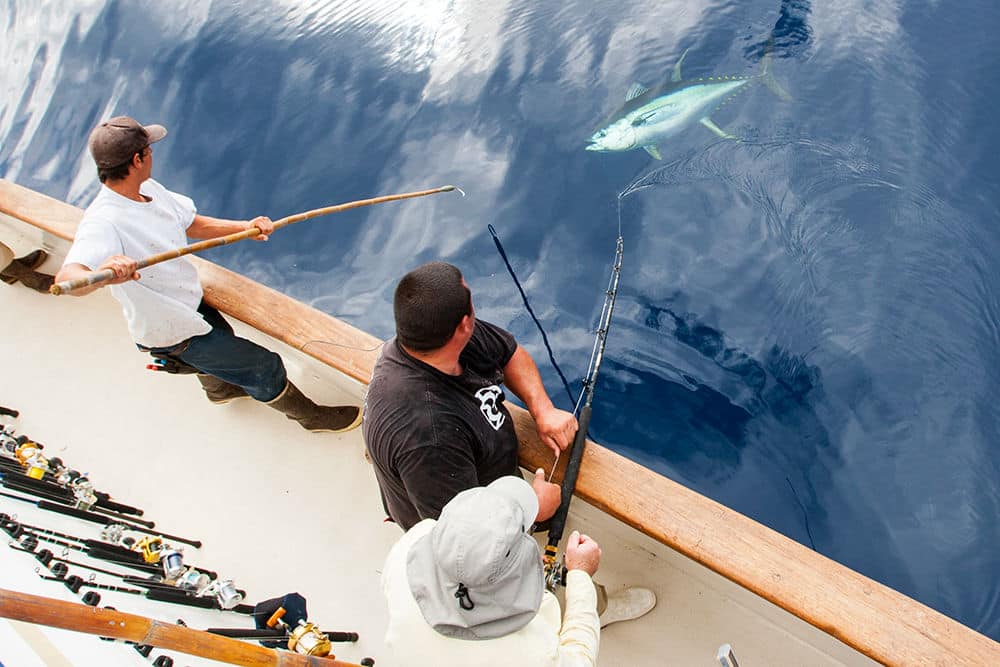Don’t Fear the Overrun
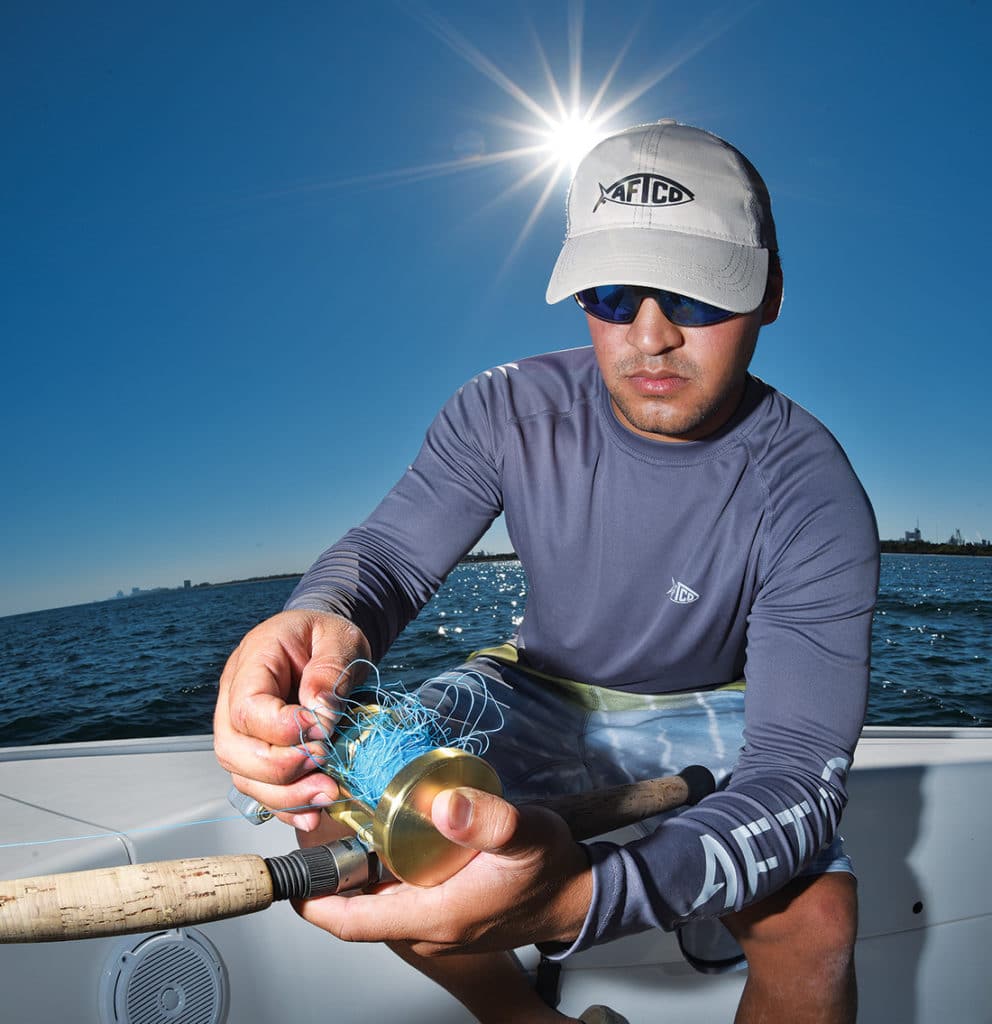
Whether casting a jig or live bait, West Coast anglers are some of the best offshore conventional casters I’ve ever seen. Experienced slingers out of San Diego, Dana Point, Long Beach and other popular ports launch surface iron with a star-drag reel 100-plus yards to blitzing yellowtail. Possibly even more impressive, they cast delicate live baits (as small as 4 inches long) away from a drifting or anchored boat using conventional gear filled with braided line of 65-pound-test or heavier.
Because of the nature of headboat fishing off the SoCal coast, anglers have mastered distance casting to catch tunas, yellowtail, wahoo and dorado. And because fishing is often shoulder to shoulder along a rail, anglers require lightweight conventional gear with high drag pressures to prevent losing fish to friendly-fire tangles, the boat’s hull or sharp teeth.
For anyone who trolls the majority of time with live bait, or tosses plugs with a spinner, casting 50- to 80-pound conventional gear is a whole new ballgame. But as SoCal anglers will tell you, conventional gear casts iron (a type of metal jig) farther than any spinner. Conventional reels also have stronger drag systems to land 25- to 200-plus-pound pelagics from a stationary boat (though a few elite spinners are making a push into the high-drag arena).
Given these advantages to casting conventional gear offshore, I reached out to two West Coast experts for their insight on what to do and what not to do. Their comments convinced me that there’s no reason to fear the overrun.
Practice Casting
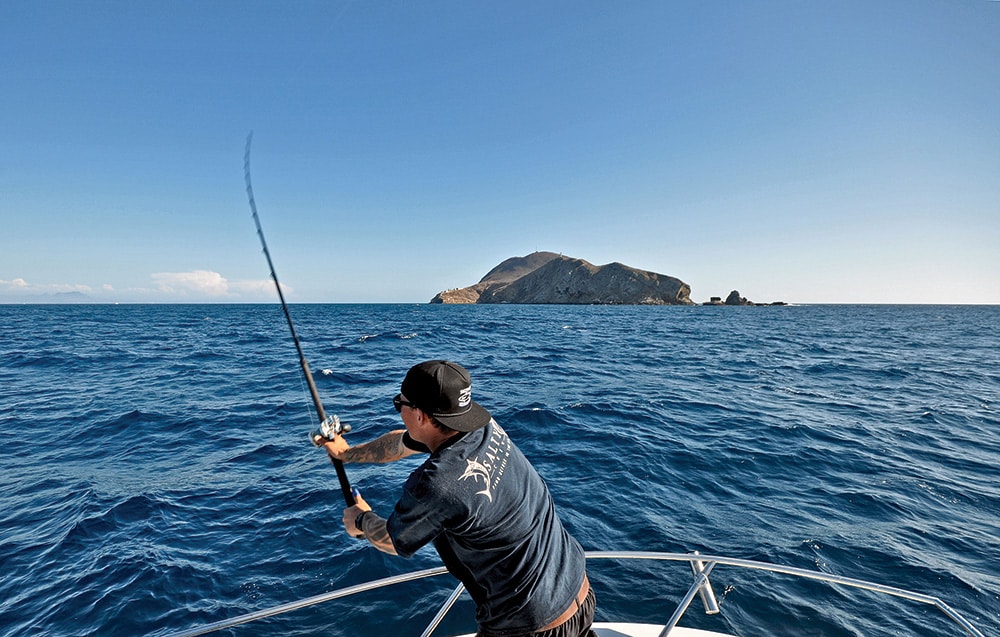
Practice, practice and practice some more, says Southern California’s Steve Carson, director of Penn Fishing University. There’s no substitute or shortcut for practicing and learning the proper cast and feel. (But don’t practice on pavement because the surface can harm your braided line.)
“Practice with an unfettered free-spool,” says Carson. “When live-bait fishing, you want zero casting controls to [allow] free-flowing movement of the spool. It’s up to you to train your thumb.”
One good way to practice casting is to use an old soft-plastic swimbait on a hook. “It replicates a live bait closely in size and weight,” explains Carson, “much better than a clothespin used by old-timers to practice. Always practice with a wet line to replicate actual fishing conditions.”
Mono is More Forgiving
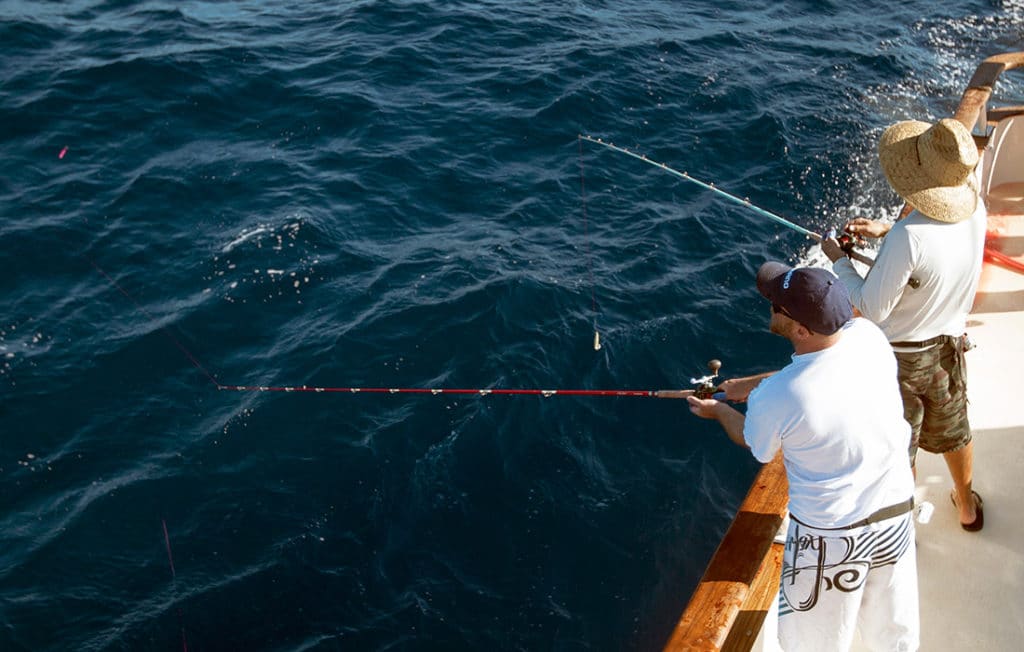
When drifting, monofilament’s ability to float during long soak periods helps live-bait anglers track their baits and prevent tangles, says Capt. Ernie Prieto, owner of Chubasco Sportfishing in San Diego.
Many surface iron casters still use mono too. “You won’t lose casting distance by using mono,” says Prieto. “In fact, I specifically put 100 yards of mono on top of my braid for casting iron.”
Carson utilizes a top shot of 100 yards of mono also. “Whatever distance you regularly cast your iron, there should be enough mono to handle a long cast,” he says. “Your braid shouldn’t touch the water unless a fish pulls drag. Use a 9- to 10-foot jig stick for longer casts.”
When fishing conventional mono with lures, the mono is much more forgiving with tangles and backlashes. Still, mono does have memory and can twist up at times. One absolute necessity is the ability to slow the line and reel speed during the cast.
“The side of the spool is your friend,” says Prieto. “Don’t thumb the line; instead, thumb the wall of the spool.
Carson points out that the shoulder of the spool is actually called the flange. “This is what you want to pressure when casting to prevent burning your thumb,” he explains. Size 16 lever drags and other larger reels mostly don’t have the flange because it cuts down on a reel’s line capacity.
Backlashes often result when something affects the timing of a cast. Don’t get distracted by other anglers’ actions. Backlashes with braid are a nightmare compared with a monofilament headache: Braid is much more expensive, and the knots are tighter and tougher to untangle.
Match Tackle Appropriately
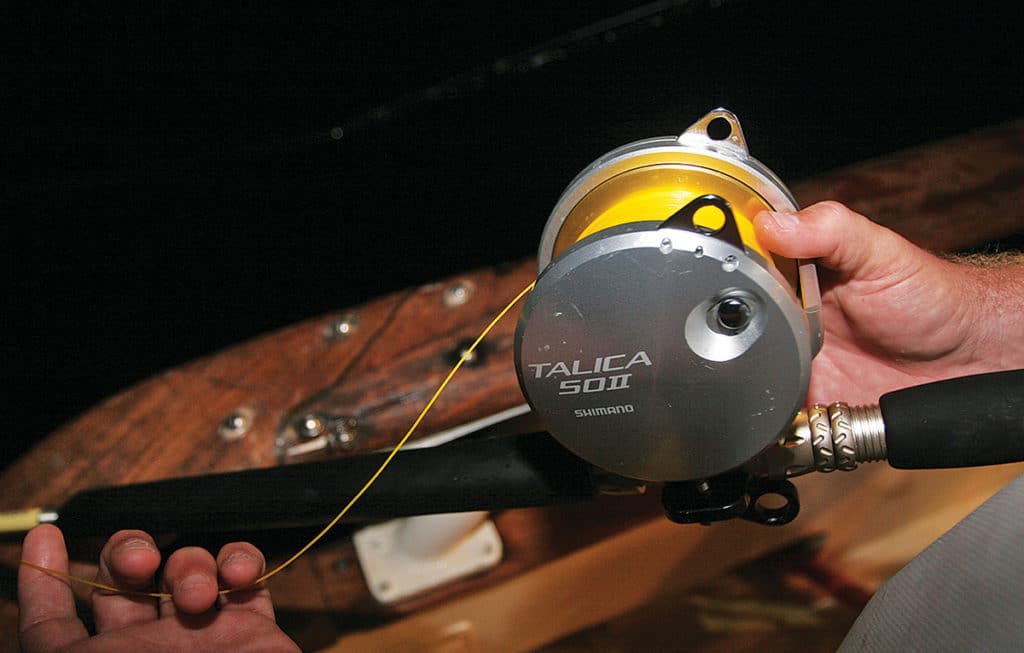
Many California fishermen, especially anglers who fish their gear on multi-day trips, tend not to tweak spool tension. For example, when a lever drag is completely disengaged, they want their spool to spin as freely as the reel is capable.
Instead of tweaking tension settings, fishermen have multiple “sticks” for different classes of fish and fishing techniques. Specific rod-and-reel setups allow anglers to cast surface iron, deep jig, fight fish in the 50-pound-and-under class, and live-bait for larger tuna in the 100-pound class. Some anglers even incorporate a spinning reel with substantial line and drag capacities into their quiver.
“A surface iron is like a driver in golf: You want to launch that thing as far as possible,” says Prieto. “So fishing live bait is like a pitching wedge or putter: It requires finesse to cast your bait away from the boat without killing or losing the bait during the cast.”
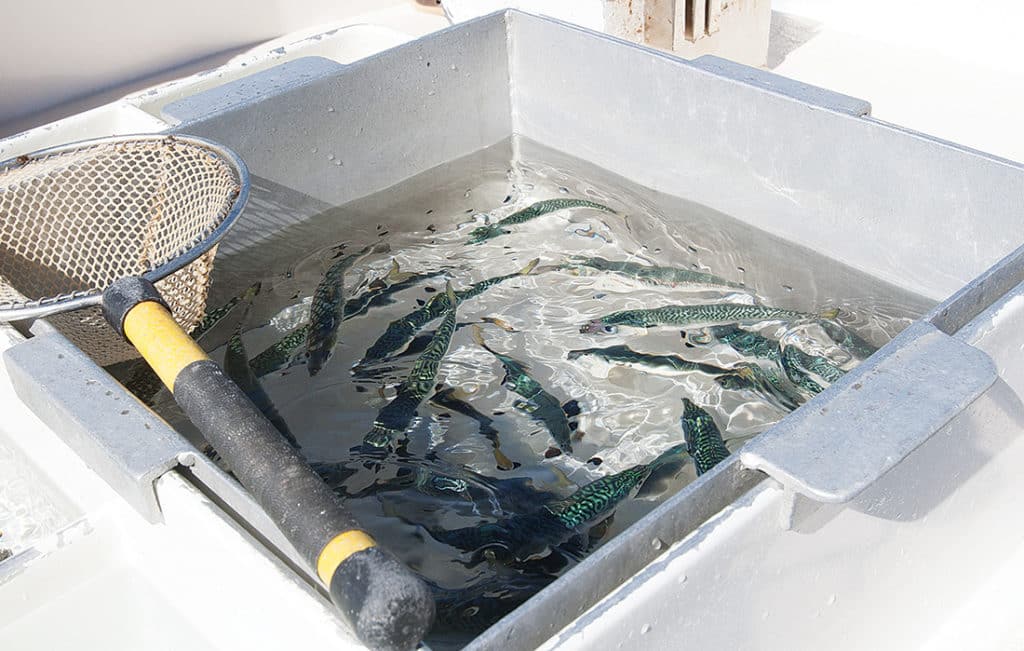
The live-bait fishery in SoCal is vitally important; Prieto fishes live bait almost 95 percent of the time. Usually sardines, anchovies or mackerel are baits of choice, depending on yearly and seasonal changes to bait prevalence. The size of the baitfish dictates the weight of tackle to use.
“My go-to live-bait rig is 65-pound-braid main line to 25-pound mono leader for tuna up to 50 to 60 pounds,” says Prieto. “Because braid’s diameter gets so thin, 65-pound is about as light as I go. Up to 80-pound braid is a common weight on my boat. The lighter line is easier to cast.”
When casting a live baitfish, as soon as the bait hits the water, immediately put your thumb to the spool to prevent a bird’s nest. In past decades, presenting big baits to monster tuna required casting a 50-wide, packed with mono, which “required the angler to ‘kick-start’ the reel with their hand to get the spool moving,” says Prieto.
Casting large baits such as mackerel, anglers today use heavy 80- to 100-pound braid to make a decent cast. Braid helps casting distance, so the leader might be just a couple of feet in length.
“Off Guadalupe Island this year, small sardines were the only bait available,” recounts Carson. “So anglers had to use 80-pound braid and a 4- to 5-foot section of 80 fluorocarbon to get a bite from a 100-plus-pound tuna. The live-bait rods were 7 to 8 feet long to help pitch the bait away from the boat.”
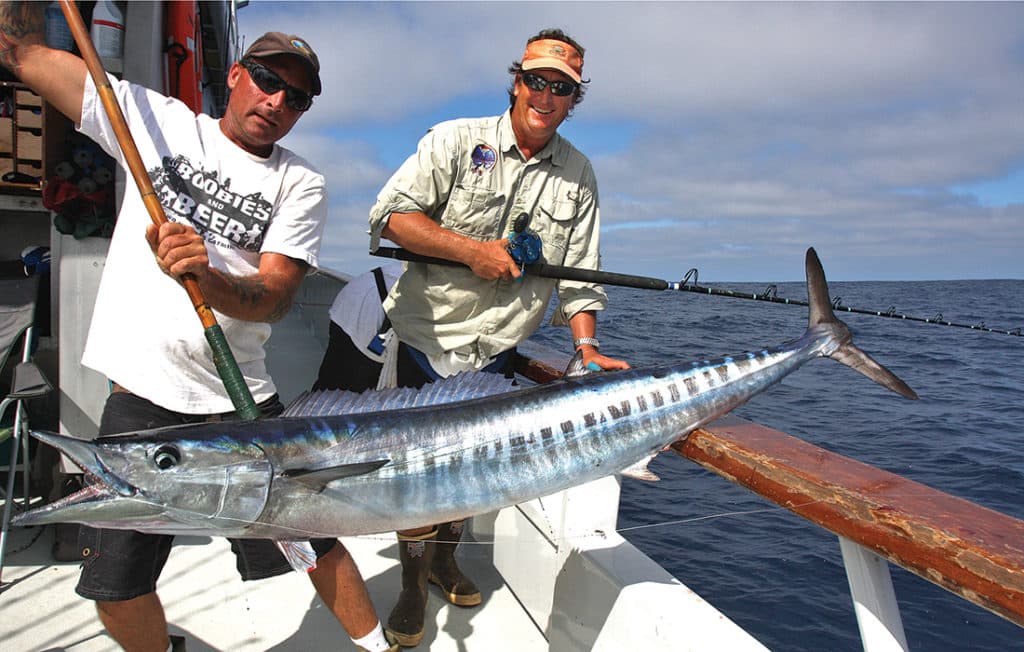
Carson calls a traditional method to cast big live baits the Prowler Boat Flip, named after the time he first saw it in 1983 on the Prowler sport-fishing boat.
“It’s an underhand flip with the right hand, able to cast 40- to 50-pound mono,” says Carson. “While flipping with your right hand, give the mono line a yank with your left to get the reel moving at the exact same speed as the cast. This is how anglers in 1980s cast anchovies (or other small baits) away from the boat.
“This was a very difficult method to master, so thankfully lighter rods and reels, plus braided line, help casting today,” Carson continues. “Capt. Mike Lackey, of long-range boat Vagabond out of San Diego, is still very good at this technique.”
Common Mistakes to Watch Out For
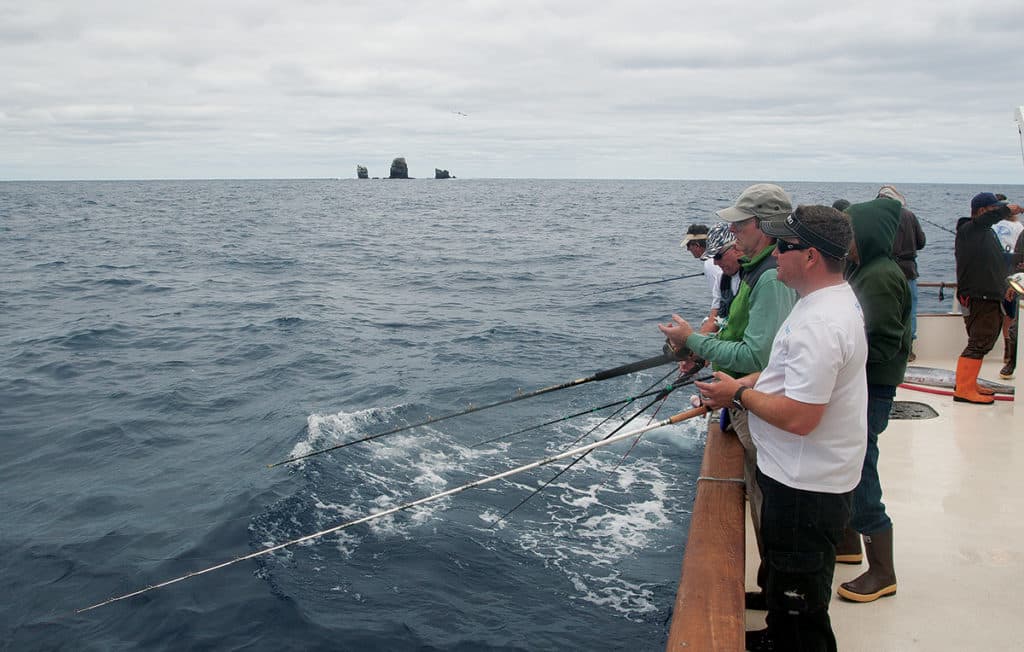
Anglers should “set and forget” their spool tensions, says Capt. Ernie Prieto. “Make your free-spool as free as possible in the morning, then set your star drag to a specific pound rating, and don’t touch the drag for the rest of the day.”
Bring a backlash tool on board, says Steve Carson. Bass fishermen tend to use these for their baitcasters, but they work on all types of reels. Bass Pro Shops sells a Baitcast Pic for $5 that helps dissect those tiny braid boogers, backlashes and bird’s nests.
Pay attention to the whole cast. Finish the cast, says Prieto. Keep your thumb lightly on the spool the whole time. “It’s like coaster brakes on a bike,” he says. “Be ready to brake quickly.” If you cast too hard and backlash, the lure will likely snap off or the bait be thrown from the hook.
Always evenly level the line back onto the reel. “Most reels that we use here don’t have levelwinds,” says Carson, “so it’s up to the angler. Make sure line is level across the reel, or your next cast could lead to a severe bird’s nest.”
Pay attention to how much line is spooled onto the reel. Underfilled reels definitely affect distance, while overfilled are more likely to backlash. “I believe a spool filled to within one-eighth of an inch from the lip of spool is the safest option,” says Carson.
Further Reading: Long-Range Mayhem
A greenhorn heads to Baja for explosive yellowfin tuna, wahoo, dorado and yellowtail action.
